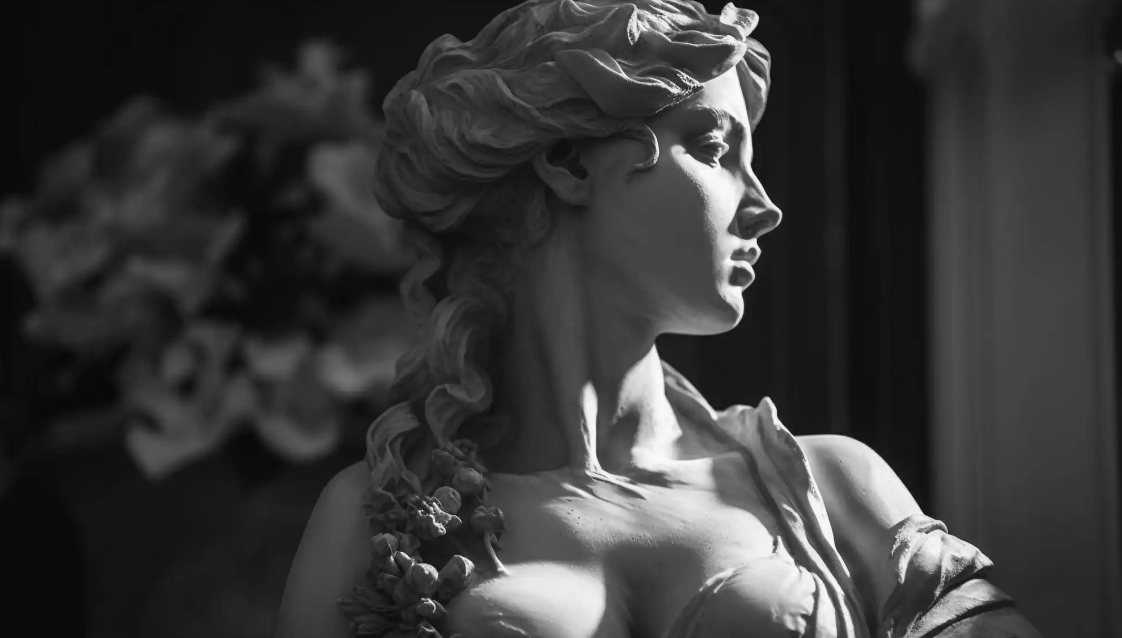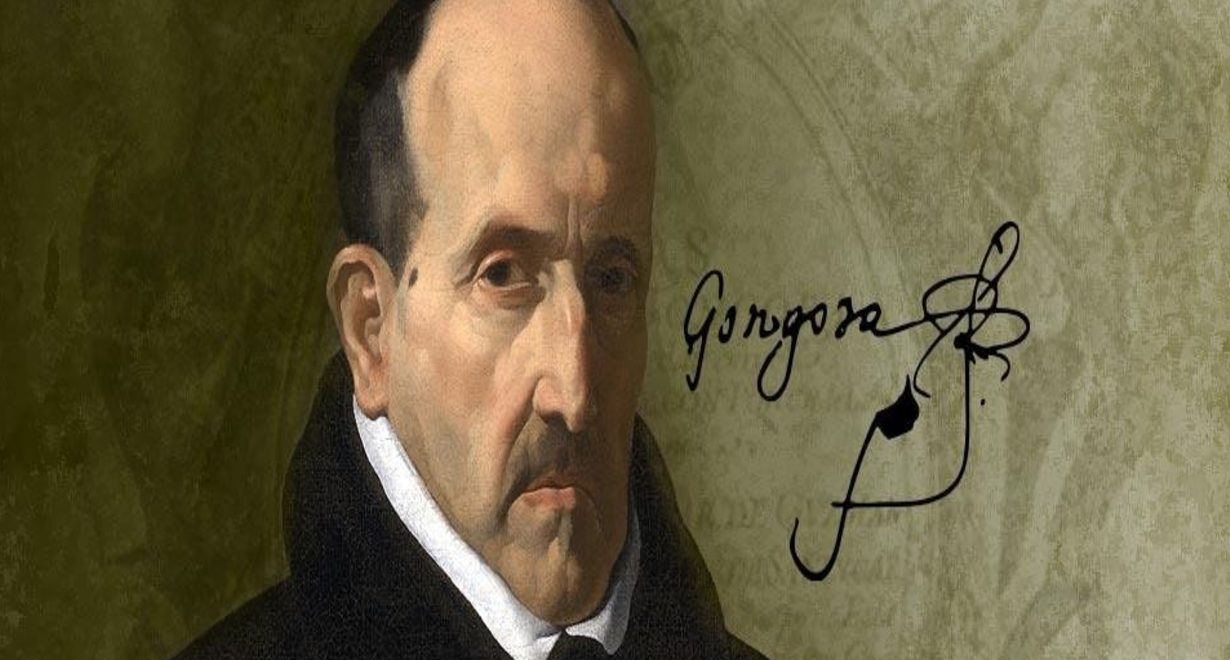By Carmen Chang,
The texts under analysis are the sonnet “Mientras por competir con tu cabello” (“While Competing with Your Hair“) and the romance or letrilla “Que se nos va la pascua, mozas” (“Our Easter is Passing, Girls“), by Luis de Góngora y Argote, both of which revolve around analogous themes: the concept of “tempus fugit“, a literary motif derived from Latin, meaning “time flies“, representing the fleeting nature of life. This theme often appears alongside “carpe diem“, which translates to “seize the day, trust not in tomorrow“. In other words, it encourages making the most of the present moment because time passes quickly, and nothing can be done against it. Ultimately, it speaks about the imminent arrival of death.
“Mientras por competir con tu cabello” (“While Competing with Your Hair“) is a sonnet whose main theme invites us to savor the pleasures of life, always considered ephemeral, while “Que se nos va la pascua, mozas” (“Our Easter is Passing, Girls“) is a mix of romance and letrilla with a satirical and mocking tone that echoes the theme of “carpe diem” (Antonio Carreño, 1982: 19). Indeed, Góngora is the greatest poet. What we mean by that is he knew how to combine musicality, colorfulness, irony, playfulness, and the gift of intelligence. He possessed great virtuosity, verbal skill, and mastery of technique.
“Mientras por competir con tu cabello” (“While Competing with Your Hair“) (1982) is one of the most famous sonnets by Luis de Góngora, the foremost representative of culteranismo, conceptismo, or gongorismo, one of the lyrical currents of the 17th century —the Golden Age— that particularly focuses on this form of composition.

The essential themes in this first composition are the beauty of the young woman, the fleetingness of life (or “tempus fugit“) as a literary topic, and the enjoyment of time (or “carpe diem“). It alludes to the description of the beloved —a young blonde who embodies the idealized woman— and the imminent arrival of death. Góngora compares the woman’s beauty to elements of nature. He even considers the beauty and freshness of the woman’s body parts to be superior to the perfection of nature itself. In fact, “the gold shines in vain” tries to measure up to the hair of the young woman.
This first text follows “the line of Spanish Petrarchism” —evidently influenced by Italian models— repeating the usual topics but not being a faithful imitation of them, as it is sometimes “tinged with disillusionment and melancholy” (Felipe B. Pedraza and Milagros Rodríguez, 2000: 266).
In summary, the poet dedicates his verse to the exaltation of the current beauty of the beloved, focusing on various physical details and elements —the blonde hair, pale forehead, red lips, delicate neck, etc.— as well as the expressions of the face that convey the most intimate emotions, or on the neck, which, besides revealing the woman’s elegance, also reflects her sometimes haughty attitude. He then urges this woman to take advantage of her physical attractiveness, reminding her that the passage of time will overshadow her beauty, and that she will turn to dust when old age, and subsequently death, arrives.
“Que se nos va la pascua, mozas” (“Our Easter is Passing, Girls“). Emilio Orozco (1984: 196), in Introducción a Góngora, details that “Que se nos va la pascua, mozas” treats the “love theme from a feminine perspective”. This is reflected in verses 57 and 58:
“quered cuando sois queridas, amad cuando sois amadas” (“Love when you are loved, Be loved when you love“).

It also represents an echo of the “carpe diem” theme. This is evident from verses 3 to 10 and from verses 53 to 60:
“Mozuelas las de mi barrio,
loquillas y confiadas:
mirad no os engañe el tiempo, la edad y la confianza;
no os dejéis lisonjear de la juventud lozana,
porque de caducas flores
teje el tiempo sus guirnaldas”. (“Girls from my neighborhood, talkative and confident:
do not let time deceive you, age, and trust;
do not let yourselves be flattered by the youthful bloom,
because from withered flowers time weaves its garlands.”)
“Por eso, mozuelas locas, antes que la edad avara el rubio cabello de oro
convierta en luciente plata, quered cuando sois queridas, amad cuando sois amadas, mirad, bobas, que detrás
se pinta la ocasión calva”. (“Therefore, crazy girls, before old age avaricious turns the golden blonde hair into shining silver,
love when you are loved, be loved when you love, look, fools, that behind
the occasion paints baldness.”)
It should be highlighted that this literary production is fundamentally of “Spanish and modern” style, distinguishing it from “the Latin or the ancient” (Emilio Orozco, 1984: 196).
In this second text, it is about the passage of time, inviting us to enjoy life before old age and the imminence of death arrive. Antonio Carreira (1998: 237) summarizes it as follows: “The poet asks the ladies of his neighborhood to enjoy while they are young, for old age will come, and they will regret lost time, bringing examples of others who lost their bloom“. His familiar way of addressing the topic was a persistent theme in Góngora (Antonio Carreira, 1998: 238- 243).
References
- Jamie Andrews. “Garcilaso y Góngora: un análisis del carpe diem en el Renacimiento y el Barroco”. Plus Ultra. V 4 n(1) (2018), p. 1-8.
- Juan Bautista Avalle-Arce, Antonio Prieto, Antonio Gallego Morell et al. “Historia de la literatura española. Tomo II Renacimiento y Barroco Siglos XVI/XVII”. [Planeada y coordinada por J. Ma Diez Borque], Madrid: Taurus Ediciones, 1980, p. 420-427.
- Antonio Carreira. “Luis de Góngora Romance”. [Edición crítica de Antonio Carreira], Barcelona: Quaderns Crema, 1998, p. 238-243.
- José García López. “Historia de la literatura española”. [Decimonovena edición], Barcelona: Editorial Vicens-Vives, 1977, p. 300-309.
- D. Miguel Herrero García, Samuel Gili Gaya, D. Guillermo Díaz-Plaja et al. “Historia general de las literaturas hispánicas. Tercer volumen. Renacimiento y Barroco”. [Bajo la dirección de Díaz-Plaja, D. Guillermo], Barcelona: Editorial Barna, 1953, p. 341-365.
- Robert Jammes. “Comprendre Góngora. Anthologie bilingüe”. Toulouse: Presses de Toulouse-le Mirail, p. 58-61.
- Gabriel Laguna Mariscal. “En tierra, en humo, en polvo, en sombra, en nada: historia de un tópico literario”. Anuario de Estudios Filológicos. V XXII (1999), p. 197-213 and V XXIII (2000), p. 243-254.
- J. –G. Magnabal. “Histoire de la littérature espagnole. Deuxième période (suite). Troisième période”. [Traduit de l’anglais en français pour la première fois], Paris: Hachette et Cie, Libraires –Editeurs, 1872, p. 60-65.
- Emilio Orozco. “Introducción a Góngora”. Barcelona: Editorial Crítica, 1984, p. 129, 196.
- Felipe B. Pedraza, Milagros Rodríguez. “Historia esencial de la literatura española e hispanoamericana”. Madrid: Editorial EDAF, S.A., 2000, p. 263-267.
- A. Valbuena Prat. “Literatura castellana”. Barcelona: Editorial Juventud, 1974, p. 518-634.
- Francisco Rico, Bruce W. Wardropper. “Historia y critica de la literatura española. III. Siglos de Oro: Barroco”. Barcelona: Editorial Crítica, 1983, p. 381-447.
- Julio Torri. “La literatura española. Heteroclásica. Pensar en español”. [Primera edición, 1952; Tercera edición], Madrid: Fondo de cultura económica de España, S.L., 2013, p. 299-303.




